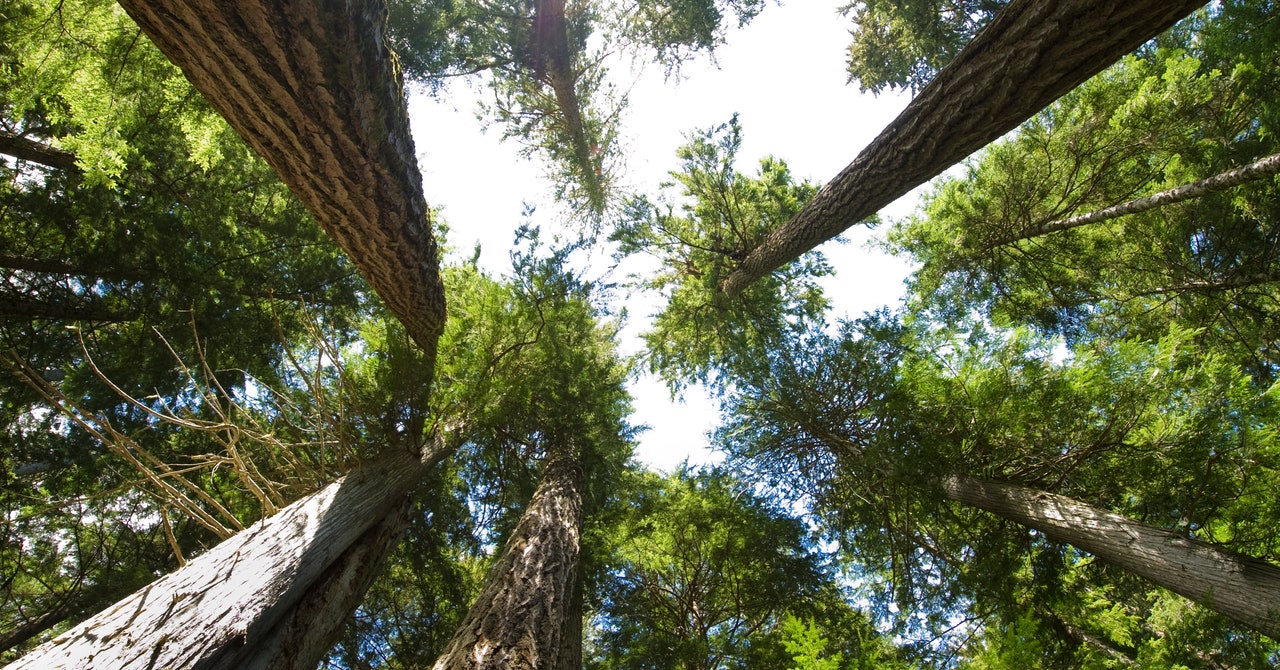
Skin burning, I returned to the shade and checked the wasp sting. I should show my girls how to make a poultice of baking soda. I sat and leaned back against the old tree nurturing that crescent of seedlings through the mycorrhizal network, the needles of the young quivering in the afternoon air.
The old trees were the mothers of the forest.
The hubs were Mother Trees.
Well, mother and father trees, since each Douglas fir tree has male pollen cones and female seed cones.
But … it felt like mothering to me. With the elders tending to the young. Yes, that’s it. Mother Trees. Mother Trees connect the forest.
This Mother Tree was the central hub that the saplings and seedlings nested around, with threads of different fungal species, of different colors and weights, linking them, layer upon layer, in a strong, complex web. I pulled out a pencil and notebook. I made a map: Mother Trees, saplings, seedlings. Lines sketched between them. Emerging from my drawing was a pattern like a neural network, like the neurons in our brains, with some nodes more highly linked than others.
Holy smokes.
If the mycorrhizal network is a facsimile of a neural network, the molecules moving among trees were like neurotransmitters. The signals between the trees could be as sharp as the electrochemical impulses between neurons, the brain chemistry that allows us to think and communicate. Is it possible that the trees are as perceptive of their neighbors as we are of our own thoughts and moods? Even more, are the social interactions between trees as influential on their shared reality as that of two people engaged in conversation? Can trees discern as quickly as we can?
How similar could the mycorrhizal network really be to a neural network? Sure, the pattern of the network and the molecules transmitting from node to node through the links might be similar. But what about the existence of the synapse; isn’t that crucial to signaling in a neural network?
Could information be transmitted across synapses in mycorrhizal networks, the same way it happens in our brains? Amino acids, water, hormones, defense signals, allelochemicals (poisons), and other metabolites were already known to cross the synapse between the fungal and plant membranes. Any molecules arriving by way of the mycorrhizal network from another tree might also be transmitted through the synapse.
Chemicals are released into these synapses, and the information must then be transported along an electrochemical source-sink gradient from fungal-root tip to fungal-root tip, similar to the workings of a nervous system. The same basic processes, it seemed to me, were occurring in the mycorrhizal fungal network as in our neural networks. Giving us that flash of brilliance when we solve a problem or make an important decision or align our relationships. Maybe from both networks emerge connection, communication, and cohesion.
It was already accepted widely that plants use their neural-like physiology to perceive their environment. Their leaves, stems, and roots sense and comprehend their surroundings, then alter their physiology—their growth, ability to forage for nutrients, photosynthetic rates, and closure rates of stomata for saving water. The fungal hyphae, too, perceive their environment and alter their architecture and physiology. Like parents and children, my girls and Don and me, adapting to change, aligning to learn new things, figuring out how to endure. I’d be home tonight. Mothering.
The Latin verb intelligere means to comprehend or perceive. Intelligence.
The mycorrhizal networks could have the signature of intelligence. At the hub of the neural network in the forest were the Mother Trees, as central to the lives of the smaller trees as I was to Hannah and Nava’s well-being.
